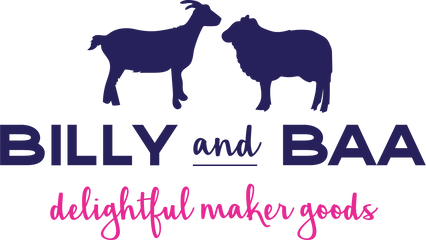The Mighty Oyster Shell
While some would scoff at someone knitting on the beach, any seasoned stitcher knows that it's one of the best places to get a few rows in. We've made the connection between knitting and the ocean even greater with our new Oyster Shell Notion Dishes.

Handmade from found oyster shells on the shorelines of Isle of Palms, South Carolina, these dishes are a beautiful way to hold your stitches markers or jewelry while you knit or crochet. The inside of each dish is styled with a batik fabric and découpage finish, while the underneath side reveals the shell's natural appearance. Because of this, no two dishes are the same.

These dishes sit pretty next to our favorite knitting spot, but more importantly they have become a conversation starter and reminder about the simple moves we can make to protect the health and sustainability of our planet.
Oysters grow in "blooms" of millions along coastlines of the United States, most famously in Gulf waters along Louisiana and in the Atlantic waters from Maine to South Carolina. Just one oyster can filter up to 50 gallons of water a day and, over time, form incredible reef structures, which provide homes for other marine life.
Oysters are sedentary creatures, growing larger and reproducing in an upward cluster, ultimately forming a protective barrier to absorb the impact of waves. This helps to slow erosion and minimize the impact of storm surges.
However, mainly due to overfishing, our once flourishing oyster populations are rapidly declining. One statistic from the peer-reviewed BioScience journal, estimates that "85% of oyster reefs have been lost globally."
Enter organizations like Coalition to Restore Coastal Louisiana (CRCL) and the Billion Oyster Project that are working to restore coasts through oyster reef restoration projects. Primarily through oyster shell recycling programs, organizations like these are able to create a foundation for new oyster spat to grow, creating a new reef.
This recent, 6-minute video from Vox provides an excellent visual look at how oyster reef restoration projects work:
What Can You Do To Help
- Educate yourself about the importance of oysters and familiarize yourself organizations involved in oyster reef restoration: The Nature Conservancy, Billion Oyster Project, National Oceanic and Atmospheric Administration (NOAA), Chesapeake Bay Program, and Coalition to Restore Coastal Louisiana, to name just a few.
- Educate your friends. Use your Oyster Shell Notions Dish as a conversation starter and drop a bit of knowledge on your oyster-eating friends.
- Eat at restaurants that recycle their oyster shells. And if your favorite oyster bar doesn't recycle, encourage them to start.
- If you eat oysters at home, find a recycling center to drop off your shells. If you're in the Chesapeake Bay region, the Oyster Recovery Partnership is a great resource, but, otherwise, a quick Google search can provide drop off locations in your area.
What We're Doing
We will be donating $5 from every Oyster Shell Notions Dish to organizations that work to restore coastlines through oyster shell reef restoration projects. With our Batik Oyster Shell Dish collection, we will be supporting the Coalition to Restore Coastal Louisiana.
We look forward to bringing in other seasonal collections of shell dishes to continue important conversations of marine conservation and how all of us can work to make a difference. Even from the comfort of our favorite knitting chair.


